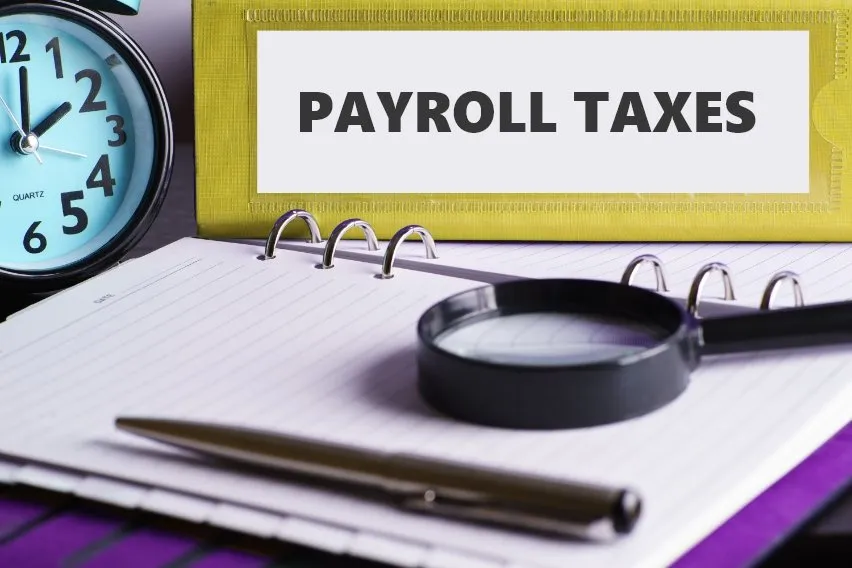Back Pay: Definition, Process & Best Practices

A vital part of a well-organized payroll is keeping track of money owed to current and former employees. Even if the amount of owed money isn’t seemingly significant, it can cause discrepancies that lead to accounting errors.
In some cases, intentional or unintentional wage violations related to back pay can result in a private suit and high attorney’s fees. Both employers and employees need to understand what back pay is and how it works in order to avoid potential issues.
Table of Contents
What Is Back Pay?
Back pay represents the amount of money an employer owes to an employee. In other words, back pay is the amount of money an employee was supposed to receive according to the contract or wage laws but didn’t.
Back pay may include missed wages, salary, overtime pay, bonuses, commissions, and fees. Moreover, it’s often related to the penalties an employer has to pay due to wage violations.
It’s important to mention the distinction between back pay and retro pay, i.e., retroactive pay. Back pay is the amount of money an employee was supposed to receive but didn’t. Retro pay is the money an employee receives because of changes to the contract or to correct accounting errors.
Since the two terms are similar, it’s best to explain them using an example. If an employee receives payment for the number of hours they worked, but their wage wasn’t calculated correctly, the difference is retroactive pay. On the other hand, if the employee didn’t receive any payment for a certain amount of hours worked, the difference is back pay.
Keep in mind that some people distinguish back pay and retro pay while others consider them synonymous.

How Back Pay Works
If an employee believes their current or former employer withholds a certain amount of money, they have the right to ask for it. The Fair Labor Standards Act (FLSA) protects employees from unfair labor practices.
If an employee believes FLSA provisions were violated, they can file a complaint with the Department of Labor’s Wage and Hour Division. Then, the Department of Labor (DOL) can file suit on the employee’s behalf. The employee can also file a private suit without the DOL’s assistance. Besides the amount owed, the employee can claim damages, court costs, and attorney’s fees.
The first step toward receiving back pay is talking to the employer and reporting the violation to state and federal departments of labor.
Once the employer receives a request for back pay, they’ll first need to confirm eligibility to determine if the employee in question is entitled to back pay. The employer will likely consult the employee’s manager or coworkers to ensure they have accurate information. Then, they’ll determine if the employee asked for an appropriate amount of money.
After establishing eligibility, the employer will check the budget and balance it if necessary to approve the payment. In some cases, the employer may want to pay the employee from a different account, which will require filling out the necessary paperwork.
The final step is updating records. The employer needs to keep the payment confirmation and edit the employee’s file.
According to the statute of limitations, employees can report unintentional violations up to two years after they happen. In case of willful violations, employees have up to three years to report them. Back wages can also be claimed under the Service Contract Act.
Reasons for Back Pay
There are numerous reasons an employee may require back pay. Here are the most common reasons:
- Wrongful termination
- Minimum wage violations
- Classification of salaried workers as hourly workers or vice versa
- Discrimination
- Unpaid overtime wages
- Unpaid bonuses
- Accounting errors
- Errors in recording sales
- Unpaid wages for the final pay period in case the employee resigned or was terminated
Back Pay Best Practices
Human resources (HR) departments need to be very careful when handling employee compensation. HR representatives can take certain actions to ensure employee payment requests are processed accurately.
Here are the back pay best practices:
Keep Accurate Data
The first rule of human resources is to keep accurate data regarding every employee. You should have extensive records of everyone’s wages, previous paychecks, overtime hours, bonuses, raises, promotions, etc.
By keeping detailed records, you protect workers and the company. Plus, you also reduce the possibility of accounting errors and ensure the company’s budget is balanced.
Act Quickly
You should act as soon as you learn about a back pay request. Begin taking the necessary steps immediately to confirm the employee’s eligibility and include the back pay owed on the next paycheck, if possible.
Calculate Carefully
Before issuing back pay wages to an employee, be sure to double-check the amount. If you pay the wrong amount, you could be looking at an additional back pay request.
If you have a new employee or a trainee do the calculations, be sure to supervise payment. You can also do the calculations yourself and double-check them with the new employee to ensure you come up with the same amount.
Communicate Regularly
If you’re taking care of a back pay request, communicate this with other team members, other teams in your company, and the managers. Everyone should be in the loop about the process and the timeline for issuing the money owed.
Communicating this with other employees prevents misunderstandings and ensures everyone knows you’re handling it.
Use Payroll Software
High-quality payroll software offers numerous benefits to large and small business owners. First of all, payroll software significantly reduces the risk of accounting errors, meaning it can prevent back pay issues.
Secondly, payroll software increases employees’ efficiency and makes accounting much simpler. Instead of dealing with repetitive accounting duties daily, the employees can focus on other duties and let the software do the work.
Payroll software also makes tax filing easier and protects the company during an audit.
These are only some of the advantages payroll software offers to large and small business owners. Many other benefits make such programs popular and contribute to a company’s success.
Example of Back Pay
According to the Fair Labor Standards Act (FLSA), employees are entitled to overtime wages if they work more than 40 hours per week. If an employee worked 47 hours but received payment only for the 40 hours, they may be eligible for back pay.
Key Takeaways
Back pay is the amount of money an employer owes to an employee for work done in the past. In some cases, the employer withholds the money intentionally, while in others, an accounting mistake or another accidental issue resulted in a back pay situation.
According to U.S. law, all employees need to be treated fairly. If an employee notices a discrepancy in their paycheck, they should reach out to the employer as soon as possible and resolve the issue.
Since resolving back pay requires time and effort, business owners should look into payroll software that reduces room for errors and increases efficiency.
FAQs on Back Pay
How is back pay calculated?
Back pay is calculated differently for salaried and hourly employees.
For a salaried employee, you should first determine the number of pay periods within a year. Then, you should divide the salary by the number of pay periods to calculate how much the employee makes per pay period. Next, divide this number further, if necessary, to determine how much the employee makes per day or hour, and then multiply the figure to calculate the amount of back pay.
Keep in mind that you should adjust the final number for overtime if necessary, and don’t forget to include employee benefits.
The process is simpler for an hourly employee. Calculate the number of hours the employee is owed back pay for and multiply it by the hourly wage. As with salaried employees, don’t forget to adjust for overtime and include benefits.

Who is eligible for back pay?
Employees may be eligible for back pay if:
- They worked overtime hours and didn’t receive compensation.
- Their employer violated state or federal minimum wage laws or regulations like the Davis-Bacon Act or the Equal Pay Act.
- They were wrongfully terminated.
- The company they work(ed) for made accounting errors, intentionally or unintentionally.
- They didn’t receive payment for the work they did before they resigned or were terminated.
Can you get back pay if you resign?
Yes, you can get back pay if you resign. If you’re eligible, the employer should pay the amount of money they owe within 30 days from the last date of employment. It doesn’t matter if you resigned or were terminated.
Is back pay taxable?
Back pay is the money employees receive for the work they did in the past, and the Internal Revenue Service (IRS) considers it income. Therefore, back pay is taxed in the same way that regular pay is taxed.
Keep in mind that the bay pack is reported on the year it was paid, regardless of when the employee worked. For example, if an employee received back pay in 2021 for work done in 2019, they will report it on their 2021 W-2 form.
RELATED ARTICLES

 Payroll Taxes: What Are They & How to Calculate Them
Payroll Taxes: What Are They & How to Calculate Them How Much Does Bookkeeping Cost?
How Much Does Bookkeeping Cost? Ecommerce Bookkeeping: The Small Business Guide
Ecommerce Bookkeeping: The Small Business Guide Shopify Bookkeeping: The Complete Guide for 2025
Shopify Bookkeeping: The Complete Guide for 2025 How To Pay Independent Contractors In 2025
How To Pay Independent Contractors In 2025